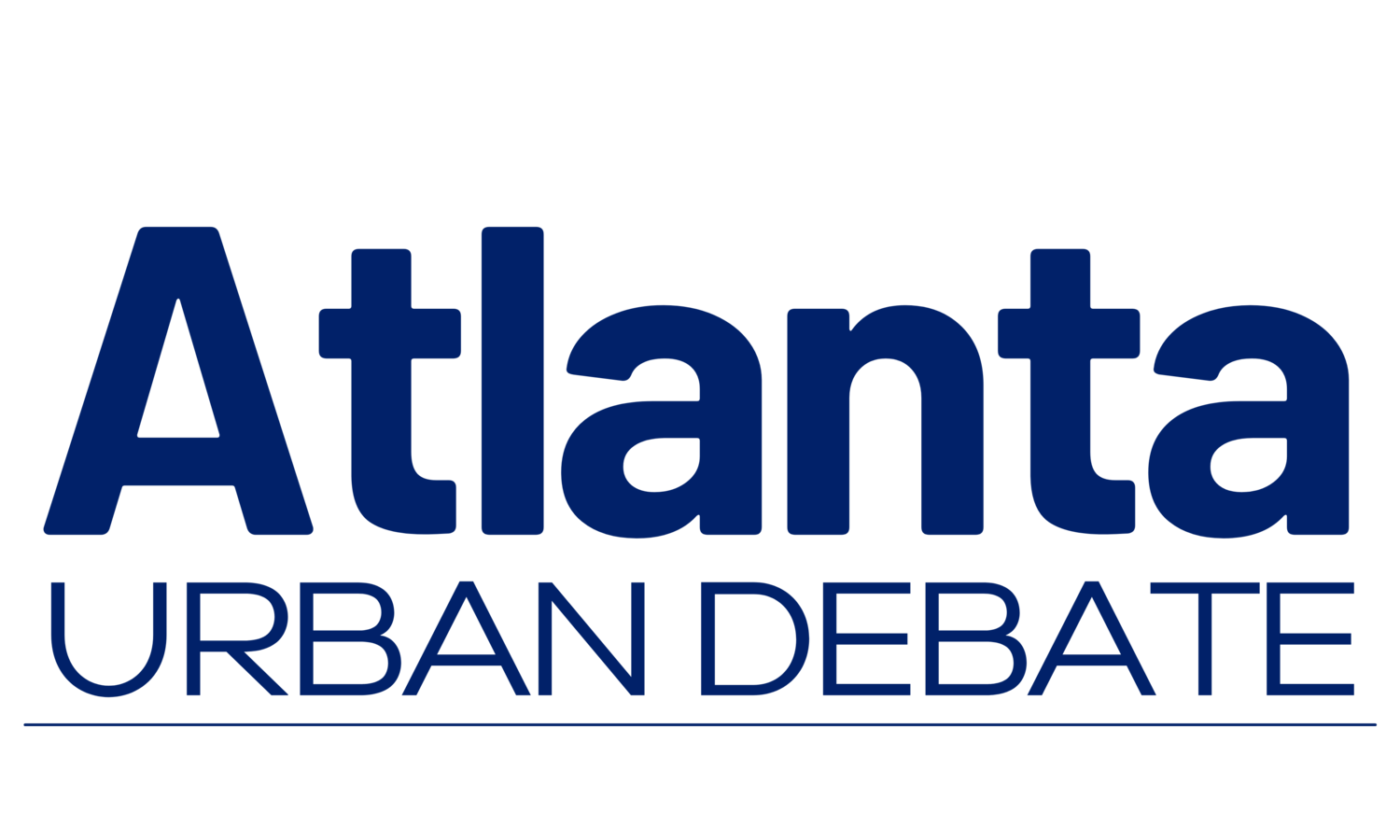The Atlanta Urban Debate League is committed to providing excellent debate education programs, services, and opportunities to diverse students, educators, and members of the community!
Being Negative: What Could Go Wrong?
Learning Objectives
Reinforce format of a disadvantage.
Deliver speech from prepared notes.
Time Needed
~15-20 min.
Resources & Materials
Paper (2-3 sheets per student)
Pencil/pen (1 per student)
Teacher Preparation
- Review the parts of a disadvantage, per the AUDL curriculum.
- Write down ~8-10 “policy proposals” for which students could brainstorm sample disadvantages. Phrase the topic in the form of a “What could go wrong…?” question.
- For less experienced students, focus on humorous/simple topics to maintain interest.
- Example: What could go wrong if Principal X increased the length of spring break?
- Example II: What could go wrong if a unicorn attacked?
- For more advanced students, focus on political topics, particularly specific policy proposals.
- Example: What could go wrong if the United States increased the minimum wage?
- For less experienced students, focus on humorous/simple topics to maintain interest.
Lesson Outline
- What Could Go Wrong? (Activity)
- Review parts of a disadvantage.
- Divide students into small groups (2-3 students).
- Announce the topic for the round. Begin the game.
- After each topic is announced, give students a brief period of time (no more than two minutes) to answer the question with a mock disadvantage. Each answer must contain:
- All parts of a disadvantage, clearly separated and labeled.
- Specific links that clearly apply to the mechanism of the plan.
- A specific terminal impact, with a clear “story” of the negative.
- When time expires, select two groups to present their mock disadvantages to the squad. Flow each disadvantage on the board.
- After the two selected groups have presented, vote for the best disadvantage. If possible, give the winning group a suitable reward (e.g., candy).
- Give a brief RFD (reasons for decision), being sure to reference the guidelines for a disadvantage.
- Repeat until available time expires, or each group has had a chance to present.
- After each topic is announced, give students a brief period of time (no more than two minutes) to answer the question with a mock disadvantage. Each answer must contain:
Points of Improvement
Students offer vague disadvantages, with an unclear story that bears no clear relation to the proposed policy.
Signs of Mastery
Disadvantages have clear, specific links that directly relate to the specific mechanism of change identified by the plan.
Instructor Notes
Keep up the pace! This game is engaging because it is fast paced.
No round should take more than five to six minutes from start to finish.
Don’t let any one group dominate.
For less experienced students, have fun with the topic creation process!
